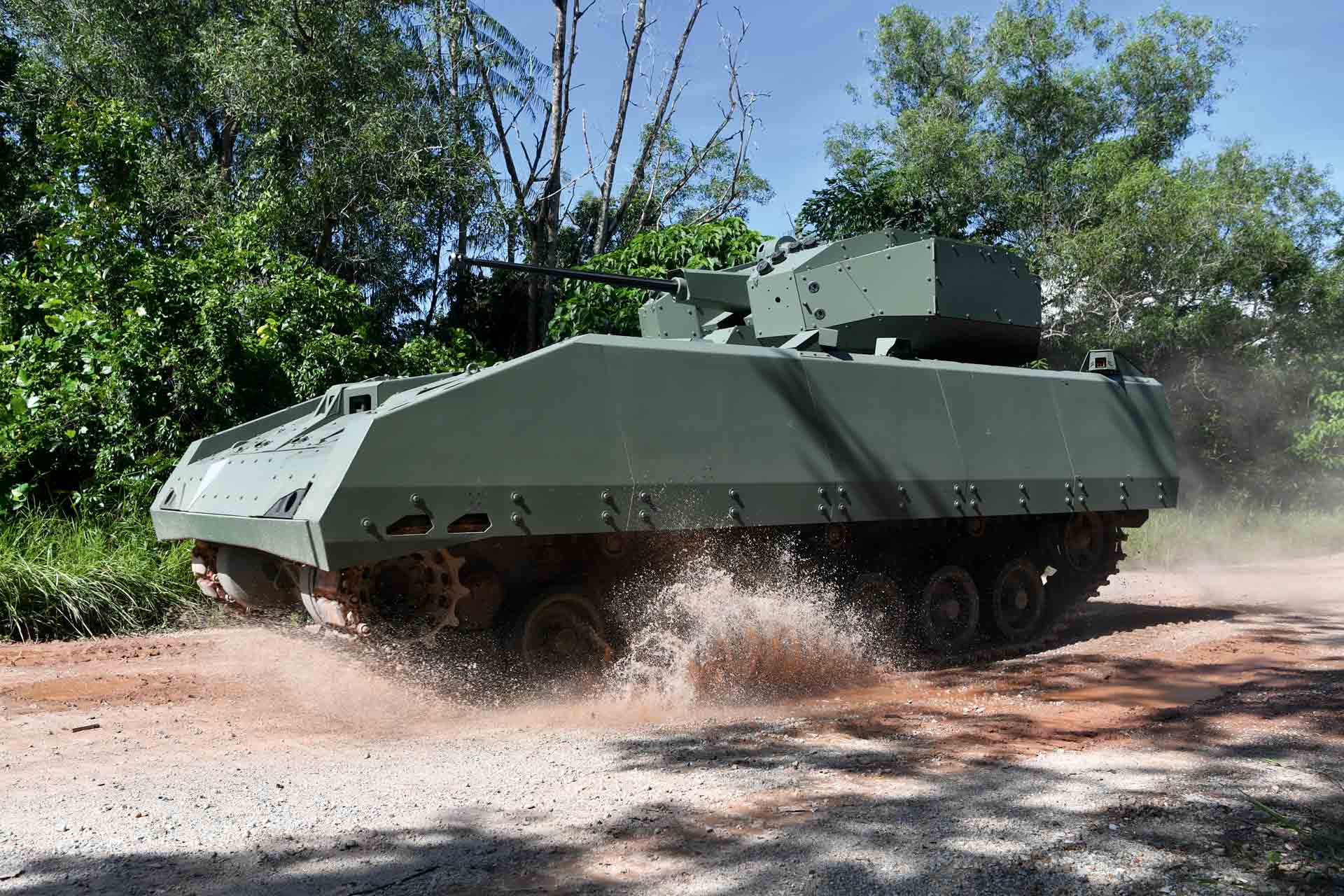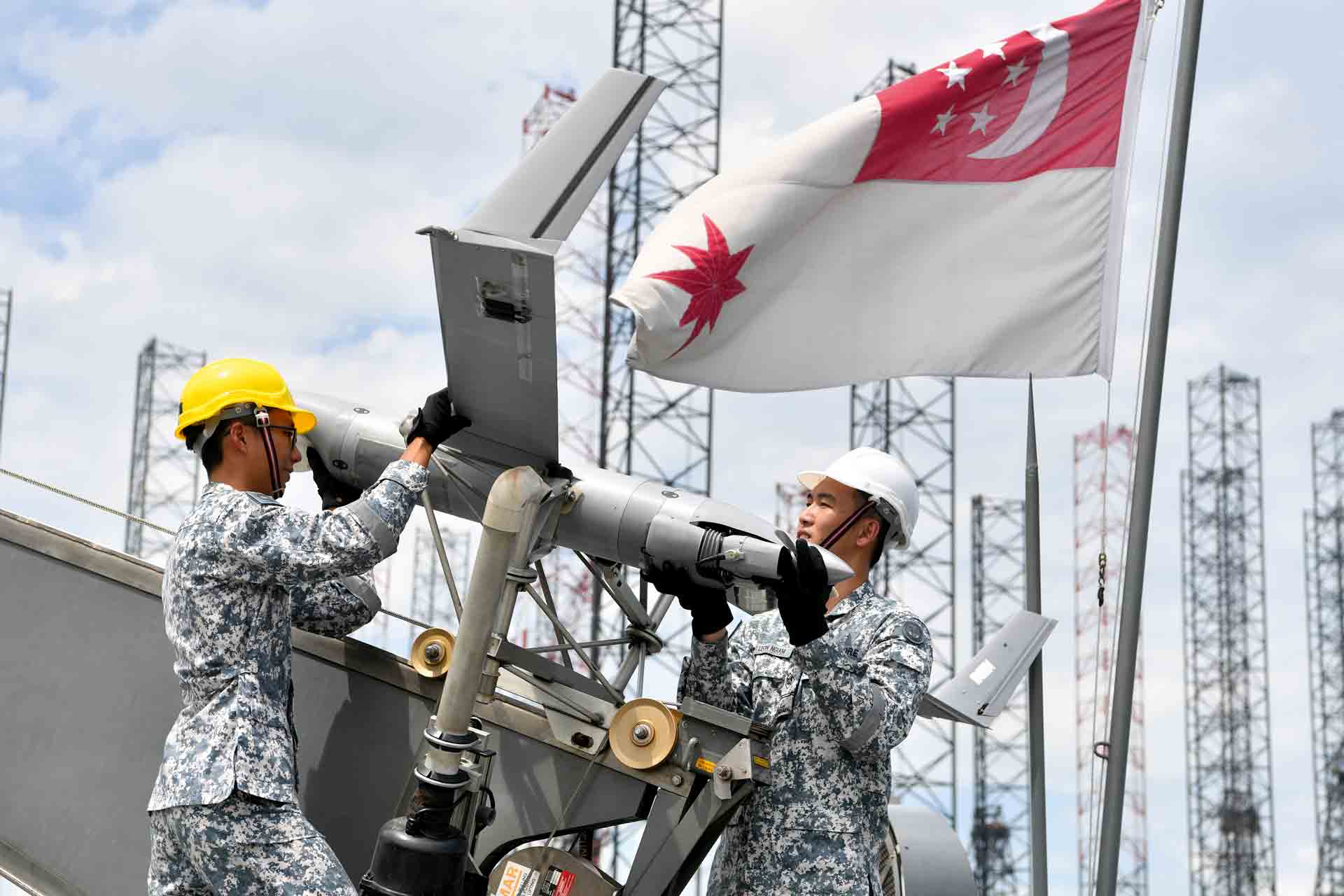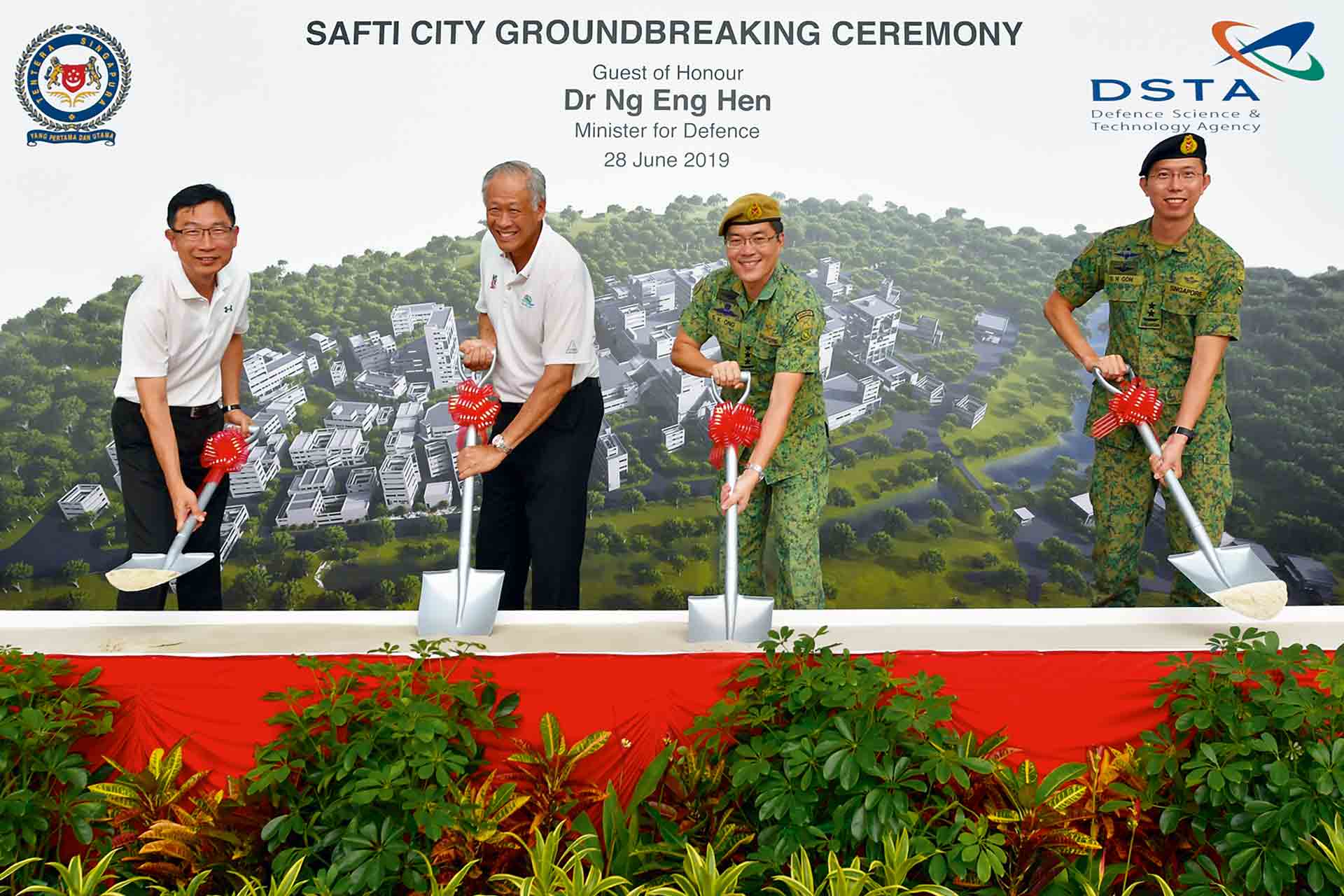OPS & TRAINING
Preparing a stout defence for generations to come
01 Aug 2019
In this year's Singapore Armed Forces (SAF) Day interview, Minister for Defence Dr Ng Eng Hen outlines the SAF's plans to meet challenges ranging from shrinking manpower numbers to an increase in cyber threats and terrorism.
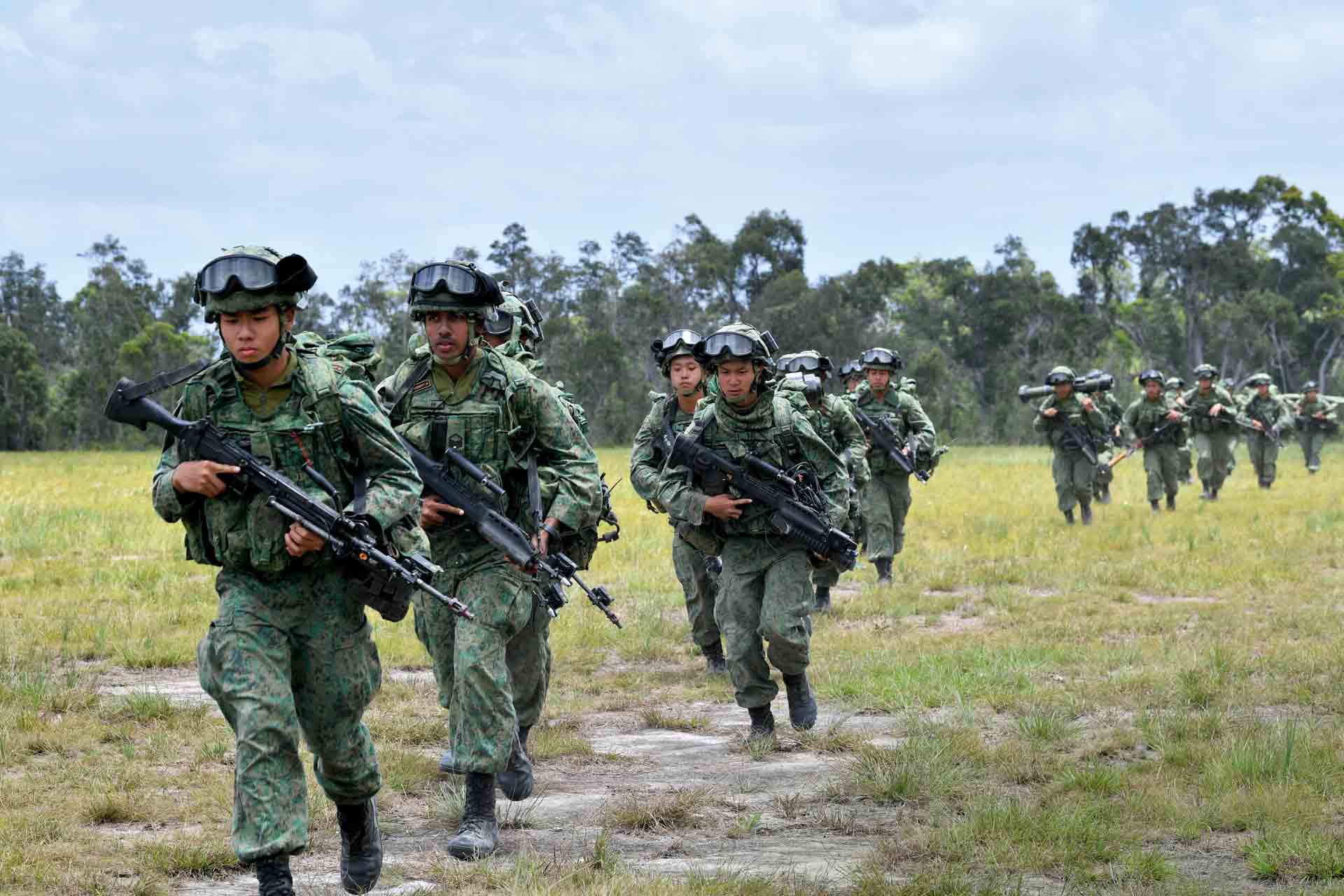
To build a stout defence of Singapore for another generation, the SAF will continue to invest in assets that can deliver greater combat power using less manpower. It will also optimise the deployment of national servicemen, build high-tech training facilities, and ramp up its counter-terror and cyber defence capabilities.
These were the key points Dr Ng made ahead of SAF Day on 1 Jul at Murai Camp. He gave his annual interview after the groundbreaking ceremony for SAFTI City on 28 Jun.
Describing a projected one-third reduction in manpower by 2030 (because of Singapore's declining birth rates) as the SAF's greatest internal challenge, Dr Ng noted that "the SAF must have platforms which have greater firepower and yet, at the same time, use fewer men than before".
The upcoming Multi-Role Combat Vessel (MRCV), which will replace the Republic of Singapore Navy's (RSN's) Missile Corvettes from 2025, is one such example, said Dr Ng.
"It will have a greater reach because it has air assets, underwater assets (and) surface assets which are unmanned, and operate using half the number of sailors compared to other modern frigates."
Optimising deployment
Beyond hardware, making the most of every Full-time National Serviceman (NSF) and Operationally Ready National Serviceman (NSman) across the SAF is key to coping with the impending manpower crunch, said Dr Ng.
Newer assets and weapons that use more automation and require less physical strength have made it possible for the SAF to deploy national servicemen to vocations that they were previously ineligible for, he added.
For example, technology has enabled the Navy to deploy service-fit National Servicemen to the operations centre for base defence, which was previously only manned by combat-fit servicemen.
To deliver greater combat power using less manpower, the SAF has been investing in assets like the Hunter, a fully digitalised armoured fighting vehicle that requires just a three-man crew.
- said Dr Ng Eng Han
National servicemen in the RSN are also deployed in vocations that used to be helmed only by Regulars. Since November 2016, NSFs have been operating the ScanEagle Unmanned Aerial Vehicles (UAVs) on board the Missile Corvettes. Each NSF UAV operator is deployed in a hybrid UAV team, comprising three Regulars and one NSF.
Going forward, those who perform well during In-Camp Training as NSmen will have the chance to become UAV co-pilots.
One NSF who has been trained as a UAV operator is 3rd Sergeant (3SG) Ryan Ang. "It was a big opportunity for me to be part of something that not many NSFs in the Navy — let alone the SAF — get to do: handling all these unmanned systems, alongside Regulars, on a daily basis," said the 19-year-old.
The Navy has also pre-identified roles for NSFs and NSmen as new capabilities such as unmanned surface vessels are introduced over the next few years.
Meanwhile, the RSN has increased the deployment of NSmen in security operations. For example, NSmen were deployed as part of the Accompanying Sea Security Teams (ASSeTs) in security operations for the 33rd ASEAN Summit last August. They worked alongside Regulars and NSFs, going on board commercial vessels to check for illegal weapons and suspicious crew.
Said Colonel Ong Chee Wei, Head, Naval Personnel: "It doesn’t matter whether (they) are NSFs or NSmen… We want to make sure they are gainfully and meaningfully deployed when they are with us in service."
Dr Ng added that the SAF will do more to better match the skills and aptitudes of NSFs to relevant vocations. Currently, enlistees with professional expertise in cybersecurity or nursing can be deployed to the cyber defender or medic vocations respectively.
The SAF is also exploring ways to deploy more NSmen to vocations that match their civilian expertise — in areas such as law, medicine, engineering, psychology, ship operation and more — under the Expertise Conversion Scheme, said Dr Ng.

High-tech training city
Just as technology advances and assets improve, so too must the SAF’s training methods. To this end, the SAF is investing in new training facilities such as the upcoming SAFTI City.
With features such as configurable road networks and over 70 buildings — including HDB homes, commercial buildings as well an "underground" MRT station and bus interchange — this state-of-the-art urban training facility will allow soldiers to train realistically in a wide variety of scenarios.
Construction for the first phase will begin this year, and the city will be completed progressively from 2023. The second phase, which is still in the planning stage, will include the building of an industrial complex.
SAFTI City will come with interactive targets that not only pop up when troops approach, but are also able to "shoot" back. This will help to hone soldiers’ reaction.
All the action will be tracked in real time by video cameras, while a data analytics system provides performance feedback for both individuals and teams.
Dr Ng, who officiated at the groundbreaking ceremony of the smart urban training facility, noted that SAFTI City will be fully digitalised. "You have sensors that can tell you that you have been shot and taken out (in) real time... The kind of realism in training with terrain and instant feedback will be, for the first time, made available…(to) infantry soldiers."
The SAF is also developing a training area in Queensland, Australia that is more than 10 times the size of Singapore which includes a live-firing training facility. "We envisage a best-in-class training facility…If we can achieve that, that will be a significant enabler for the SAF."
Improving efficiency
Dr Ng said the SAF is also actively looking into ways to cut down time needed for administration, so that soldiers can have more time for training.
An example is the Army Integrated Force Preparation Hub at Sungei Gedong, a one-stop hub that houses armoured vehicles, weapons as well as communications and optical equipment.
This means troops from Armour units no longer have to go to various camps to collect them. Instead, this equipment is "pushed" to them just like how NS units today are equipped at the Mobilisation and Equipping Centres.
The Republic of Singapore Air Force (RSAF) is trialling the use of the Fleet Management System (FMS) — the "brain" of the RSAF's Smart Air Base concept — at Tengah Air Base on its fleet of F-16 fighter aircraft.
The system uses a smart algorithm to predict possible aircraft defects, allowing the ground crew to conduct pre-emptive maintenance. It even prioritises the necessary actions to meet operational and training demands. Personnel can also use a mobile app to track and book various maintenance equipment for use.
Elaborating on the FMS, Head of Air Base Operability Systems, Military Expert (ME) 5 Khor Mark Wan, 37, said: "What this entails is how fast we (can) 'generate' aircraft wave after wave — we want to make sure aircraft is available and in the right configuration to suit the mission type."
Building a cyber formation
On combating the growing transnational threat of cyberattacks, Dr Ng said there will be a major push to recruit and train more Regulars as cyber experts.
"We are going to invest significant resources to raise and train a cyber formation, cyber officers and men as well as facilities," said Dr Ng, noting that a cyber range facility called the Cyber Defence Test and Evaluation Centre (CyTEC) had been set up in 2015 to conduct advanced cyber defence training and exercises.
The SAF is also looking into expanding its cyber vocation to include more NSFs, as well as deploying NSmen with the right professional expertise in cyber vocations. Interested Regulars can also make a mid-career switch to the cyber vocation.
Besides protecting its own systems and key installations from cyberattacks, the SAF has to defend against orchestrated information campaigns that aim to weaken Singaporeans' will and resolve.
Tackling transnational challenges
On tensions and conflicts that may happen due to rising nationalism and territorial disputes, Dr Ng said the SAF has to stand ready to defend Singapore's interests.
"The SAF is trained to respond professionally, not to escalate, and yet preserve our integrity and sovereignty. And if disputes arise, our first recourse is to settle them peacefully through international laws," he said, citing how Singapore resolved the territorial dispute over Pedra Branca with Malaysia.
On terrorism, Dr Ng said the SAF has to be prepared as the centre of gravity of terror attacks shifts from the Middle East to this region. A Special Operations Command Centre will thus be set up by end of this year, to allow the Special Operations Task Force to plan, monitor and manage counter-terrorism operations against multiple attacks in many areas.
To be located in Hendon Camp, the Centre will be equipped with enhanced Command, Control, Communications, Computers and Intelligence systems. It will work closely with relevant agencies in managing incidents when necessary.
The SAF's next-generation counter-terrorism operations will also leverage technology such as robotics, unmanned systems, artificial intelligence and data analytics. This will allow for faster, leaner and more lethal operations.
Smart Training Facility
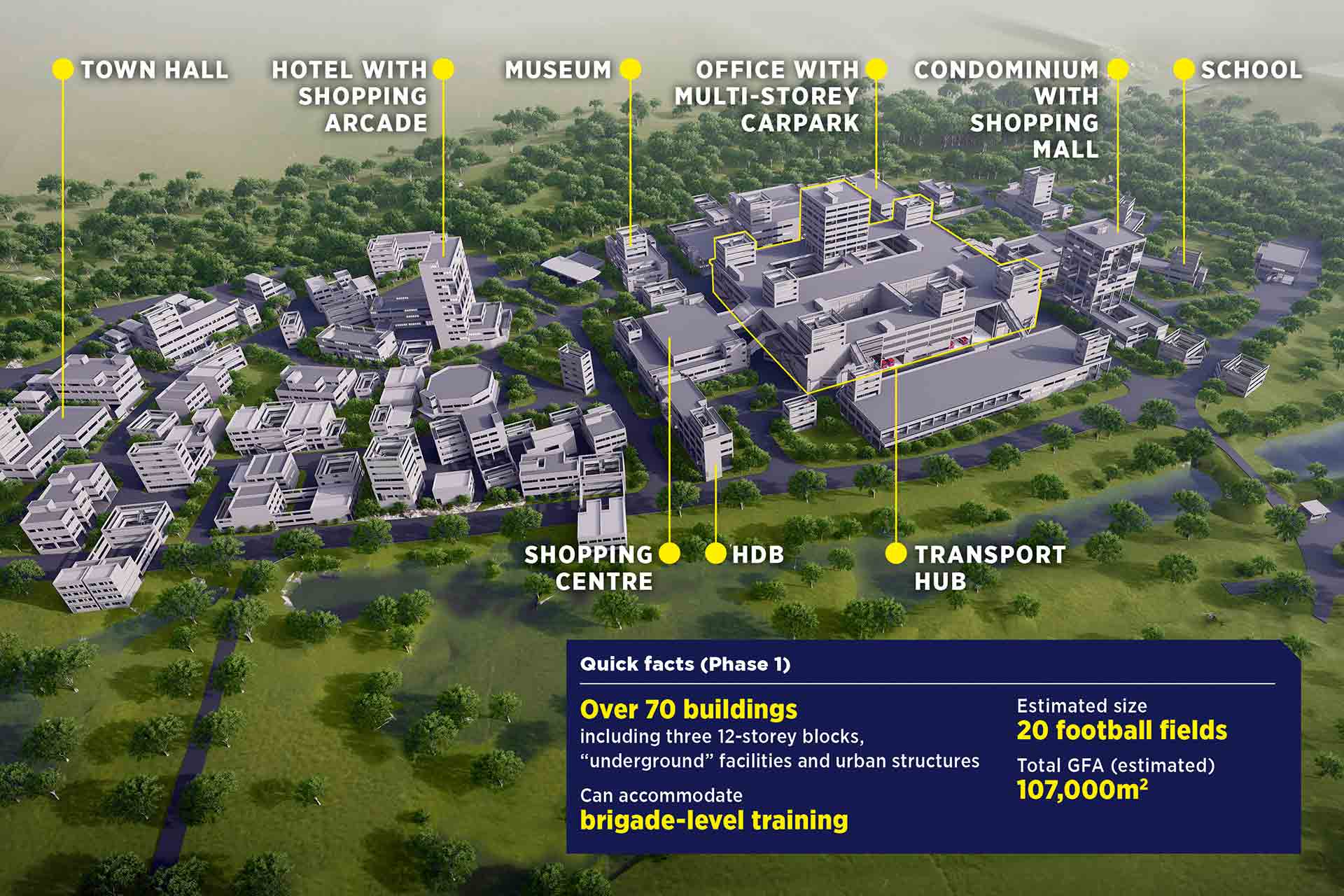
Leveraging smart technologies

Smart training
- Fully instrumented with sensors for monitoring and data capturing
- Interactive targetry with shoot-back capability
- Equipped with battlefield effects simulators for immersive experience
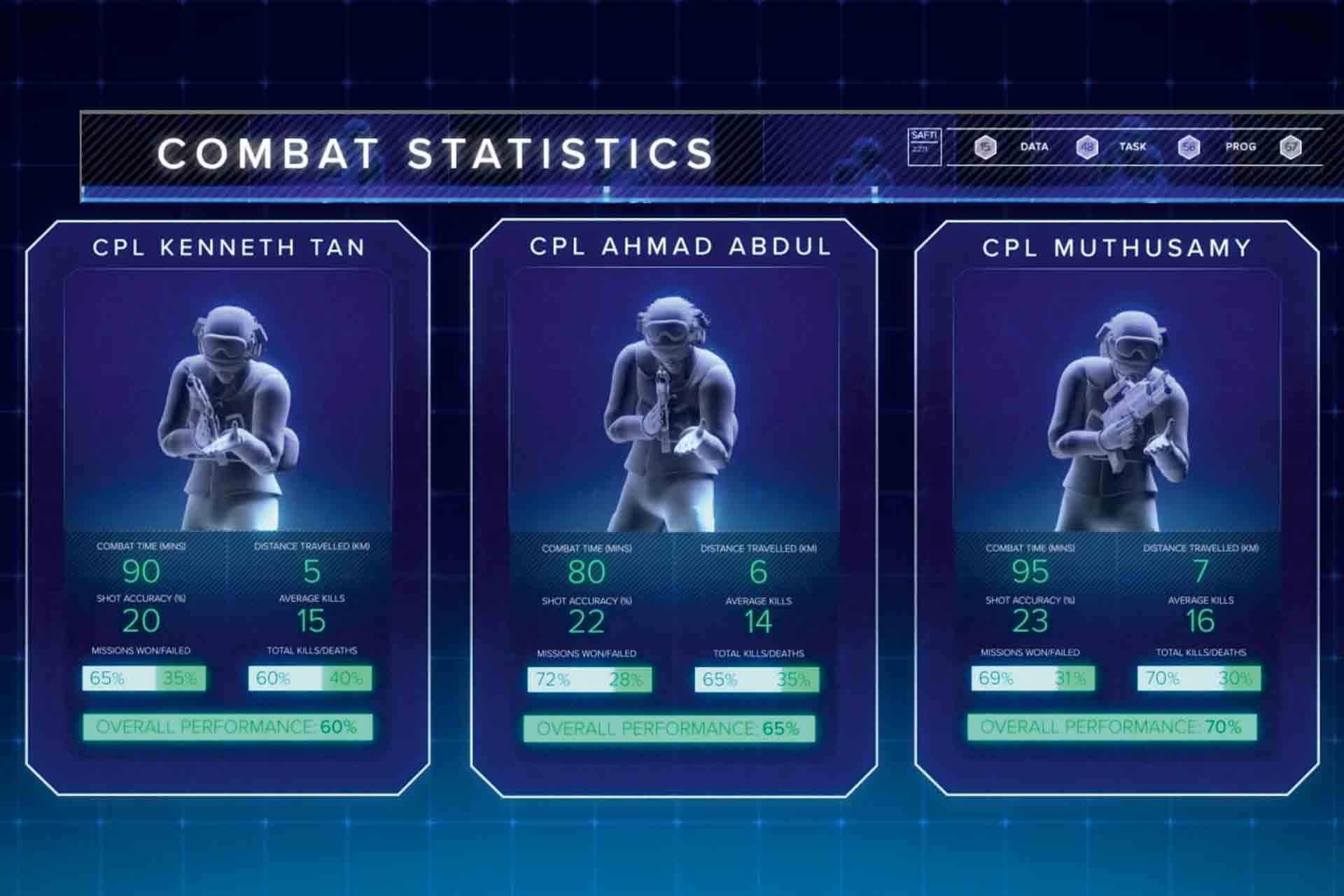
Smart learning
- Real-time collation and analysis of data
- Enhanced learning via individual and team performance report cards
- Using gamification to motivate performance

Realistic & challenging training
This complex structure with subterranean public transport nodes, interconnected high-rise buildings and other public amenities provides varied urban terrain for tough and realistic training.
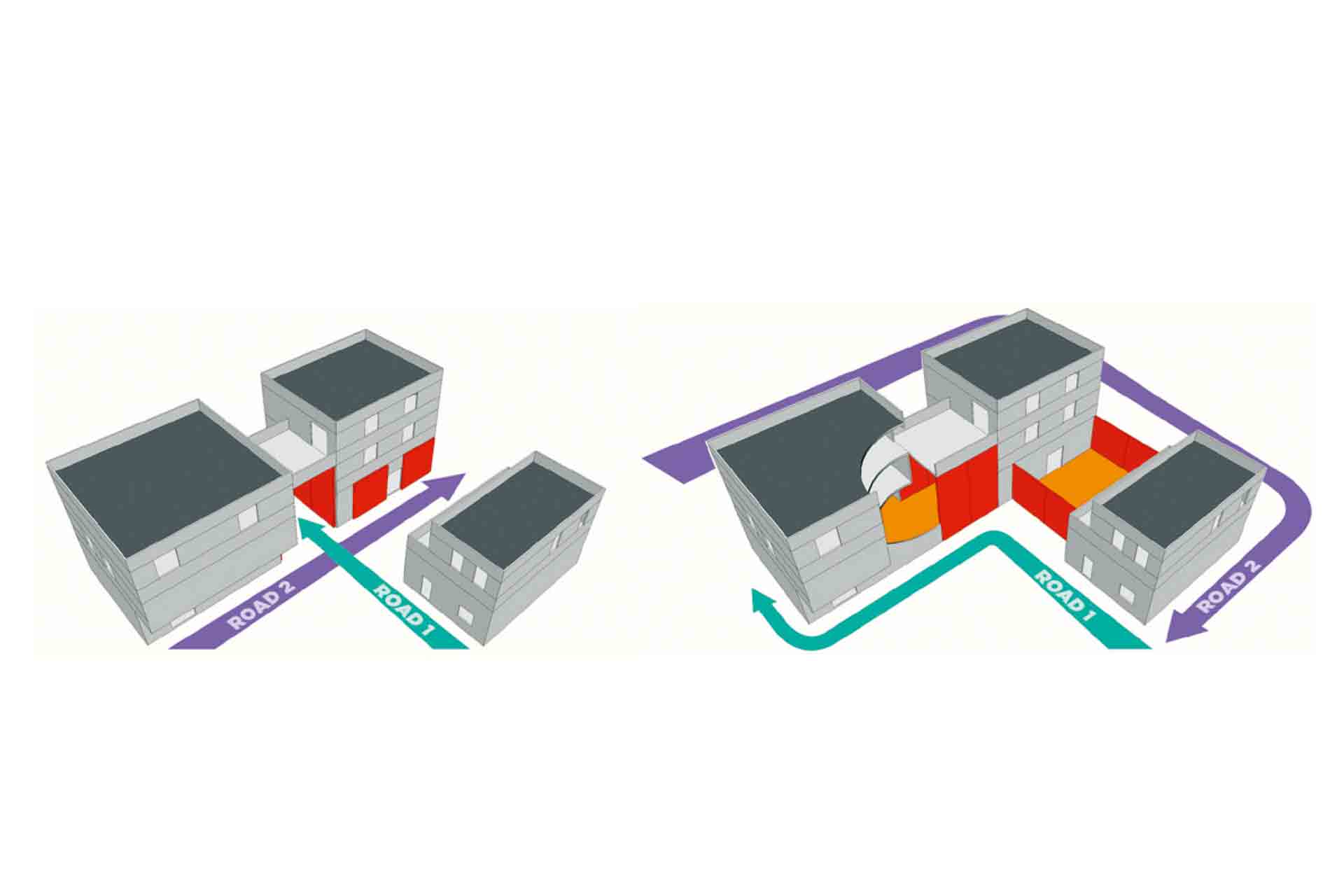
Configurable buildings & changeable road networks
Built-in swing panels allow traffic flow and buildings to be configured to training needs. Soldiers can encounter a different layout and street landscape each time they train at SAFTI City.
ALSO READ IN OPS & TRAINING

Exercise Wallaby 2025: To see better, shoot faster
31 Oct 2025
The SAF focuses on complex strike missions and multi-domain integration in Exercise Wallaby 2025, the 35th edition of its largest unilateral overseas exercise.

Ex Wallaby 25 – Greater Integration and Complexity
25 Oct 2025
The 35th edition of the SAF’s largest unilateral overseas exercise is an opportunity for expanded scale and deeper integration towards an effective, networked fighting force.

Ex Forging Sabre ramps up use of unmanned assets in integrated strike operations
12 Sep 2025
In this 10th edition of Exercise Forging Sabre, the SAF sharpened its cutting edge for the dynamic modern battlefield, with expanded integration between manned and unmanned platforms.

